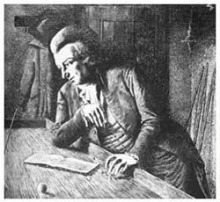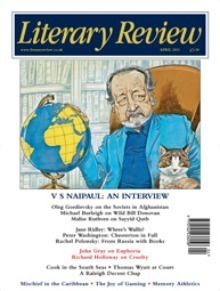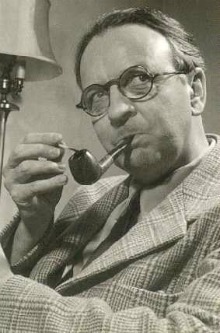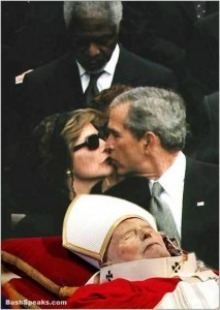Matt Rees's Blog - Posts Tagged "vienna"
Researching the novel
Novelists aren’t journalists. Research for a novel isn’t the same as researching a journalistic article.
I’d have thought that was too obvious to need stating. But then I became a published novelist, and I realized that people thought the two things were rather the same.
I was a journalist for almost 20 years before my first novel was published. THE COLLABORATOR OF BETHLEHEM is a crime novel set in Bethlehem during the intifada, and I’d spent over a decade covering the Palestinians by the time the book came out in 2007. No need for new research there.
Much of the next two books, A GRAVE IN GAZA and THE SAMARITAN’S SECRET, were based on stories I had covered as a journalist. Though I returned to the places many times before I wrote the books, these visits were mainly to record details of place, smell and weather. It wasn’t to interview people, as a journalist must.
That’s because I wanted the books to have their basis less in the political moment at which I had covered those stories, and more in the emotional response I had observed in other people and in myself as those events unfolded.
Things were different when I came to research my new novel, THE FOURTH ASSASSIN, which will be published in February.
THE FOURTH ASSASSIN is set in Brooklyn, New York, where there’s a growing community of Palestinian immigrants. I lived in New York in the 1990s, when I covered Wall Street for some US newspapers and magazines. I was a Greenwich Village type, with forays to Soho, Tribeca and the Lower East Side. I used to go months without leaving Manhattan. Brooklyn wasn’t exactly one of my regular haunts. So last year I went out to Bay Ridge, where most Palestinians live, and met a couple of people. I toured the neighborhood with a kid in his late teens and learned about the gang culture.
I specifically didn’t want to do what a journalist does. I didn’t want to sit down and pull out my notepad, though I can see why novelists may feel the urge to do so. I wanted to walk the streets as my detective Omar Yussef would – a little alienated, not knowing quite where I was, out of place. I know Omar Yussef – the real man and his fictional manifestation – well enough to make my way through Bay Ridge as though he were with me.
During my visit to New York, I stopped in at the home of some friends who had been correspondents for a US newspaper in Jerusalem. One of them said: “So who’re you talking to in Brooklyn?”
It was a journalist’s question—who you’re talking to will determine the depth of information you garner and therefore will signal the worth of your article. I felt a stab of defensiveness. It was as though she had accused me of not doing my job. Of course, I wasn’t doing my job, because I no longer had a job. Journalism was my job. Now I’m a novelist. Most definitely not a job.
But the twinge I felt at her query alerted me to the difference in my new “métier” (let’s see how many ways I can find to avoid referring to my writing as a “job”).
I recently finished writing the manuscript of a novel about Mozart. When I began it, various friends suggested I talk to “experts” on the subject. I didn’t. Because they weren’t experts on what I was writing about. They were experts on the known facts about Mozart. Well, I can read as well as they can.
What I needed were musicians, who could tell me how they get inside a Mozart piece, how they plot out their performance emotionally. I needed friends in Vienna who could take me to little-known places that would give me the atmosphere of the eighteenth century in that city. I needed to learn to play the piano, to feel the extent of Mozart’s genius and to be moved with (rather than just “by”) his music.
A journalist collates the impressions and assertions of others. As a novelist, I’m focused on my own impressions. If there’s anything to be asserted in my books, it ought not to be a digest of someone else’s thoughts.
I’m starting this process again. The novel I’m researching now will be set in Italy in 1600 and will be about an artist. I’m off to Rome in a few weeks, and already friends are asking me which experts I’m intending to interview. I may talk to some art historians, but they won’t be the most important factor in my research. That’ll come when I put some oil on canvas.
I don’t expect to show anyone the results of my daubings (just as I don’t want anyone except my two-year-old son to listen to my rotten piano playing). But the sensation of working with paint is going to be much more important than hearing someone’s assessment of how it was for someone else long dead to muck about with oils.
(I posted this earlier today on the International Crime Authors Reality Check blog, which I write along with Christopher G. Moore, Barbara Nadel and Colin Cotterill. Check it out.)
I’d have thought that was too obvious to need stating. But then I became a published novelist, and I realized that people thought the two things were rather the same.
I was a journalist for almost 20 years before my first novel was published. THE COLLABORATOR OF BETHLEHEM is a crime novel set in Bethlehem during the intifada, and I’d spent over a decade covering the Palestinians by the time the book came out in 2007. No need for new research there.
Much of the next two books, A GRAVE IN GAZA and THE SAMARITAN’S SECRET, were based on stories I had covered as a journalist. Though I returned to the places many times before I wrote the books, these visits were mainly to record details of place, smell and weather. It wasn’t to interview people, as a journalist must.
That’s because I wanted the books to have their basis less in the political moment at which I had covered those stories, and more in the emotional response I had observed in other people and in myself as those events unfolded.
Things were different when I came to research my new novel, THE FOURTH ASSASSIN, which will be published in February.
THE FOURTH ASSASSIN is set in Brooklyn, New York, where there’s a growing community of Palestinian immigrants. I lived in New York in the 1990s, when I covered Wall Street for some US newspapers and magazines. I was a Greenwich Village type, with forays to Soho, Tribeca and the Lower East Side. I used to go months without leaving Manhattan. Brooklyn wasn’t exactly one of my regular haunts. So last year I went out to Bay Ridge, where most Palestinians live, and met a couple of people. I toured the neighborhood with a kid in his late teens and learned about the gang culture.
I specifically didn’t want to do what a journalist does. I didn’t want to sit down and pull out my notepad, though I can see why novelists may feel the urge to do so. I wanted to walk the streets as my detective Omar Yussef would – a little alienated, not knowing quite where I was, out of place. I know Omar Yussef – the real man and his fictional manifestation – well enough to make my way through Bay Ridge as though he were with me.
During my visit to New York, I stopped in at the home of some friends who had been correspondents for a US newspaper in Jerusalem. One of them said: “So who’re you talking to in Brooklyn?”
It was a journalist’s question—who you’re talking to will determine the depth of information you garner and therefore will signal the worth of your article. I felt a stab of defensiveness. It was as though she had accused me of not doing my job. Of course, I wasn’t doing my job, because I no longer had a job. Journalism was my job. Now I’m a novelist. Most definitely not a job.
But the twinge I felt at her query alerted me to the difference in my new “métier” (let’s see how many ways I can find to avoid referring to my writing as a “job”).
I recently finished writing the manuscript of a novel about Mozart. When I began it, various friends suggested I talk to “experts” on the subject. I didn’t. Because they weren’t experts on what I was writing about. They were experts on the known facts about Mozart. Well, I can read as well as they can.
What I needed were musicians, who could tell me how they get inside a Mozart piece, how they plot out their performance emotionally. I needed friends in Vienna who could take me to little-known places that would give me the atmosphere of the eighteenth century in that city. I needed to learn to play the piano, to feel the extent of Mozart’s genius and to be moved with (rather than just “by”) his music.
A journalist collates the impressions and assertions of others. As a novelist, I’m focused on my own impressions. If there’s anything to be asserted in my books, it ought not to be a digest of someone else’s thoughts.
I’m starting this process again. The novel I’m researching now will be set in Italy in 1600 and will be about an artist. I’m off to Rome in a few weeks, and already friends are asking me which experts I’m intending to interview. I may talk to some art historians, but they won’t be the most important factor in my research. That’ll come when I put some oil on canvas.
I don’t expect to show anyone the results of my daubings (just as I don’t want anyone except my two-year-old son to listen to my rotten piano playing). But the sensation of working with paint is going to be much more important than hearing someone’s assessment of how it was for someone else long dead to muck about with oils.
(I posted this earlier today on the International Crime Authors Reality Check blog, which I write along with Christopher G. Moore, Barbara Nadel and Colin Cotterill. Check it out.)
From Hitler History to Mahler Mystery: J. Sydney Jones’s Writing Life
 Some authors exude the pleasure of reading and writing (and, believe me, when you meet them, you’d be surprised how many just don’t.) J. Sydney Jones is such a writer, with a breadth of writing experience in an array of genres that’s highly impressive and carries with it an obvious love of his craft. His Viennese Mystery series is a fascinating way to delve into one of Europe’s loveliest, most cultured cities – and damned entertaining, too. He’s also the man behind a great new blog Scene of the Crime, which focuses on the role of place in crime fiction – check out Syd’s interview with Berlin noirmeister Philip Kerr. Here Syd discusses his career and his ideas about writing.
Some authors exude the pleasure of reading and writing (and, believe me, when you meet them, you’d be surprised how many just don’t.) J. Sydney Jones is such a writer, with a breadth of writing experience in an array of genres that’s highly impressive and carries with it an obvious love of his craft. His Viennese Mystery series is a fascinating way to delve into one of Europe’s loveliest, most cultured cities – and damned entertaining, too. He’s also the man behind a great new blog Scene of the Crime, which focuses on the role of place in crime fiction – check out Syd’s interview with Berlin noirmeister Philip Kerr. Here Syd discusses his career and his ideas about writing.How long did it take you to get published?
I started out in journalism, so I had a sense of accomplishment right off, publishing my travel pieces in newspapers and magazines all over the place. Books are a different animal, but again I went with travel first and had some good early success with walking, hiking, and cycling guides. I wrote eight novels, though, before I got my first one, Time of the Wolf, published.
With the current “Viennese Mystery” series, things were easier. I had a bit of an author platform with several well-received books about Vienna and an agent who is most savvy. First query landed us the book deal.
Would you recommend any books on writing?
Tried and trusted here: you can look a lot further and do a lot worse than E.M Forster’s Aspects of the Novel. Another classic is Percy Lubbock’s The Craft of Fiction. These will not be everyone’s cup of tea, but I just love the erudite discussions in both.
What’s a typical writing day?
I get to work about nine in the morning after I drop my son off at school. I try to devote the first hours of the writing day to the current fiction project--currently the fourth book in the Viennese Mystery series. Then some exercise--tennis, if I am lucky--and lunch, followed by more mundane freelance stuff in the afternoon that also helps to pay the bills.
Plug your latest book. What’s it about? Why’s it so great?

Each of the books in the Viennese Mystery series features a famous historical figure of Vienna 1900. Requiem in Vienna focuses on musical Vienna: the composer Gustav Mahler is the target of an assassin and my protagonist, the lawyer and private inquiries man, Karl Werthen, is hired to protect him. The books are a blend of historical whodunit and literary thriller with more than a dash of historical/cultural/food lore thrown in.
Here’s what a Kirkus Reviews critic had to say of the current series installment: “Sophisticated entertainment of a very high caliber.”
How much research is involved in each of your books?
There are decades of research in the books. Explanation: I started researching Vienna 1900 long ago for my book, Hitler in Vienna. Since then I have continued to read heavily in the period, but for each book I still need to bone up on the historical folks I am featuring. Some writer once said that research was sort of like writing without the creative sweat. I enjoy the research; I probably commit about three months to each before I even begin the plotting. And thank whomever for the Internet--I can even get full editions of Viennese papers of the time online.
Where’d you get the idea for your main character?
Karl Werthen is a successful lawyer and sometimes inquiry agent, an assimilated Jew, and a distinct Viennophile. And I haven’t got a clue to where he comes from, other than a shared love for Vienna. He just appeared full-formed on the first page of The Empty Mirror, the initial in the series. A minor character, he elbowed his way to the forefront by the end of the first draft; the series concept actually had the real-life father of criminology, Hanns Gross, as the protagonist. A crusty old curmudgeon, Gross tugs Werthen away from his safe wills and trusts gig back into criminal law in that first one, to prove the artist Gustav Klimt innocent of murdering his model. But it just worked out so much better to use Werthen as my lead and Gross, the pompous pro, as the sometimes sidekick.
What’s your experience with being translated?
Somewhat odd. For example, my Hitler in Vienna was first published in Germany. I originally queried publishers there in German, and it was bought sight unseen (Hitler, at the time, was a hot topic). When they received my doorstopper of a manuscript in English and realized it needed to be translated, they were none too pleased. But they sucked it up and published anyway.
Then when trying to sell the English-language rights, I had a hell of a time convincing editors in England and the U.S. that no, they would not have to have the book translated. I already had the English original of the manuscript.
What books have influenced you?
As a young man I loved the lyricism of Steinbeck. Lee from East of Eden is still one of my favorite fictional characters. And of course there was Hemingway and Fitzgerald. Then during the almost twenty years I lived in Vienna, I became an avid reader of nineteenth- and twentieth-century British authors. Blame it on the British Council. A wonderful resource in its day with massive armchairs around a humming ceramic stove. Thomas Hardy became my literary hero; I open one of his novels and begin reading his scene-setting on some desolate heath in the south of England, and I get actual chills. The language just works for me. And Conrad. Don’t even get me started on Conrad--and the bugger wrote in a second language! A guilty pleasure also became the works of J.B. Priestley, especially his Good Companions.
Did these books influence my writing? Who knows, but they surely have made my life fuller. Le Carre, of course, pushed me in new ways with dialogue and plot, as did the early fiction works of Paul Theroux (Saint Jack, Picture Palace). I wish I could make my dialogue sparkle and crack they way those guys do. But this catalogue could go on for some time. Basta.
Thanks, Syd. Fascinating insights.
Thanks for the opportunity to chat, Matt.
Published on February 18, 2010 02:11
•
Tags:
aspects-of-the-novel, austria, berlin, berlin-noir, crime-fiction, e-m-forster, exotic-fiction, fitzgerald, gustav-mahler, hemingway, hitler, interviews, j-sydney-jones, john-le-carre, joseph-conrad, karl-werthen, matt-beynon-rees, paul-theroux, percy-lubbock, philip-kerr, requiem-in-vienna, scene-of-the-crime, steinbeck, the-craft-of-fiction, vienna, writing-life
MOZART'S LAST ARIA: the video
For today's release of my new historical crime novel MOZART'S LAST ARIA in the UK, take a look at this two-minute video introducing the book. It features my son dressed as Little Mozart, because I'm even more proud of him than I am of the book... Watch more videos about the book.
Published on May 01, 2011 00:32
•
Tags:
book-video, crime-fiction, historical-crime, historical-fiction, mozart, mozart-s-last-aria, mozart-s-sister, nannerl-mozart, video, vienna, wolfgang-mozart
Mozart Scene of the Crime
 Historical novelists recreate the emotions and events of distant times. It helps if they can use real places that still exist. In the case of MOZART’S LAST ARIA, I was able to set much of the action in streets and buildings where Mozart lived and worked – and where you can still visit.
Historical novelists recreate the emotions and events of distant times. It helps if they can use real places that still exist. In the case of MOZART’S LAST ARIA, I was able to set much of the action in streets and buildings where Mozart lived and worked – and where you can still visit.In my historical thriller, the composer’s sister Nannerl comes to Vienna to investigate her suspicion that Wolfgang was poisoned. One of the men who helps her is Baron Gottfried van Swieten, an important patron of her brother. Swieten was Imperial Librarian, and you can see the majesty and learning of that time arrayed on the shelves of the Prunksaal, the great library attached to the Hofburg, the Emperors’ palace in central Vienna.
The library is open to the public, but you’ll rarely find more than five or six other visitors there at one time – most people are shuffling with the crowds through the Emperor’s rooms down the way. It’s a gem hidden in rather plain site.
The house where Mozart died was destroyed some time ago (though you can visit a museum in the house where he wrote The Marriage of Figaro nearby). There’s a department store there now, on Rauhenstein Lane. But if you stand with your back to the spot, you can look to your left, your right, and in front of you, and you’ll see just what Wolfgang would’ve seen – except there’ll be less horse manure on the streets. Much of central Vienna remains just as it was in Mozart’s time.
Despite its destruction, I was able to describe the interior of Mozart’s home quite fully, however. There have been a number of academic theses written about the furniture and layout of the apartment. Yes, really. (Some years ago, the startling discovery was made that not only did he have two windows on the front of his studio, but he also had another one on the side. You get a Ph.d. for this stuff, you know. But anyway I’m very grateful to those dedicated Mozartians.)
You can look at a photo tour of other Mozart sites and locations from MOZART’S LAST ARIA in Vienna on my website.
Read the rest of this post on my blog The Man of Twists and Turns
Published on May 02, 2011 23:36
•
Tags:
amadeus, austria, classical-music, crime-fiction, czech-republic, historical-crime, historical-fiction, mozart-s-last-aria, nannerl-mozart, prague, vienna, wolfgang-amadeus-mozart, wolfgang-mozart
The Music Behind my Mozart Novel
 The best reason I have for writing a novel about Mozart must surely be that I love his music. Other elements contribute, including my fascination with his neglected sister and the growing historical research which I believe points toward his murder. But the music must be at the center of the novel itself.
The best reason I have for writing a novel about Mozart must surely be that I love his music. Other elements contribute, including my fascination with his neglected sister and the growing historical research which I believe points toward his murder. But the music must be at the center of the novel itself.I’ve played music all my life. But after my initial music lessons I eschewed the playing of classical music – no more Etudes by Heller for me. I’ve been a guitarist and bassist in various rock bands. Less sexily, I played glockenspiel in my high school band.
So for MOZART’S LAST ARIA, my new historical thriller in which Wolfgang’s sister Nannerl investigates his death in Vienna, 1791, I decided to learn to play piano. This showed me two things: first that I’m not much good on the piano; and second a way to see inside Wolfgang’s music, because the piano study made me think more deeply about musical theory than rock guitar. (Surely THAT doesn’t surprise anyone, but it was worth demonstrating anyhow.)
My guide in this was my dear friend Orit Wolf, a fabulous concert pianist who lives in Jaffa (You can see her dressed up as Nannerl and hear her version of Mozart’s Fantasia in D on this video). Orit’s probably best known for her heartfelt interpretations of romantic composers. When she plays Chopin or Schubert, I challenge you to stay on your feet, so emotional and breathtaking is it. But her insights into Mozart are stupendous. Our discussion of Wolfgang’s piano sonata in A minor I remember in particular. It gave me the idea of building the entire novel around the mood and structure of that piece.
Orit also introduced me to some of the techniques great musicians use when they prepare for a performance. For example, she told me that when she first looks at a piece for a performance she decides what color the music makes her think of. Before each performance, she’ll visualize that color and it will create a mood in her, and in turn that mood will be reflected in the music as she plays it. It isn’t just about hitting the right keys.
I had a similar talk with the great conductor Zubin Mehta (in which he was very frank about the lack of worth of certain composers who’ll remain nameless). He was very clear about who the greatest of them all is. “I’d find it very hard to live without Mozart,” he told me.
Read the rest of this post on my blog The Man of Twists and Turns.
Published on May 03, 2011 23:13
•
Tags:
classical-music, crime-fiction, don-giovanni, estates-theater, historical-crime, historical-fiction, historical-thriller, mozart, mozart-s-last-aria, music, nannerl-mozart, orit-wolf, prague, south-africa, staatsoper, the-magic-flute, vienna, wolfgang-amadeus-mozart, wolfgang-mozart, zubin-mehta
Guest Blogger Wolfgang Mozart: I always said I was poisoned
 At last. It took 220 years, but finally someone has told my story. I always said I was poisoned.
At last. It took 220 years, but finally someone has told my story. I always said I was poisoned.MOZART’S LAST ARIA came out this week in the UK. It’s a historical thriller by the British writer Matt Rees. I don’t mind that the Mozart of the title is my sister Nannerl – I always thought she deserved more recognition than she got. No, I don’t mind that at all, because Rees confirms for me what I felt sure of all along: I was poisoned.
I told my wife that I was sure of this six weeks before I died. It was October 1791. We were in the Prater Gardens in Vienna. I sat on a bench and said, “Constanze. I know I’ve been poisoned. I’m to be a sacrifice.”
She told me I was being a hypochondriac and that I ought to buck up from this melancholy. I pointed out that a hypochondriac thinks he’s ill. She couldn’t think of a word for someone who thinks he’s a murder victim.
I tried hard to cheer up. Tried so hard, even though I felt like I was shitting oranges every time I smiled (Readers of my collected letters will remember my penchant for naughty phrases like that. I haven’t grown out of them even after two centuries in the grave.) I did cheer up here and there, but soon enough I’d feel the pain in my kidneys and I knew they had done for me…
Who’re they? You’ll have to read MOZART’S LAST ARIA to find out. But Rees has taken advantage of all the new historical research which shows what I had been up to. And how dangerous it was.
You see, I wasn’t just a musician. Certainly I wasn’t the buffoon some people like to think I was, either. No, I was committed to the new ideas of equality and brotherhood promulgated by the Enlightenment. That was prettyrisky in Vienna back then. After all, the Enlightenment provided the ideas behind the French Revolution, and in Paris our Emperor’s sister Marie Antoinette was about to pay the price of equality.
I was a member of a lodge of Freemasons. The Emperor had made us more or less illegal. Lots of my brethren quit the Masons. I started writing songs for the lodge meetings and, well, I’m not giving away too much about Rees’s novel when I say that I had an idea for a new Masonic lodge, even though the Emperor had decreed there be no new lodges and the Imperial Secret Police was breathing down the Masons’ necks.
Read the rest of this post on my blog The Man of Twists and Turns.
Published on May 04, 2011 22:43
•
Tags:
crime-fiction, enlightenment, freemasons, guest-blogger, historical-fiction, historical-thriller, mozart-s-last-aria, nannerl-mozart, prater-gardens, vienna, wolfgang-amadeus-mozart, wolfgang-mozart
Literary Review: MOZART'S LAST ARIA 'lively, well-researched, very clever'
 In the current edition of London's Literary Review, Jessica Mann leads her roundup of new crime novels with this praise for MOZART'S LAST ARIA, my historical thriller about the great composer's death: "Matt Rees has drawn a lively portrait of eighteenth-century Vienna and of characters whose names now live only because of their connection with the composer. This novel is well-researched, very clever and written in clean, suitably formal language...This is an even better mystery novel than the author's prize-winning series about the Palestinian detective Omar Yussef--and that's saying a lot."
In the current edition of London's Literary Review, Jessica Mann leads her roundup of new crime novels with this praise for MOZART'S LAST ARIA, my historical thriller about the great composer's death: "Matt Rees has drawn a lively portrait of eighteenth-century Vienna and of characters whose names now live only because of their connection with the composer. This novel is well-researched, very clever and written in clean, suitably formal language...This is an even better mystery novel than the author's prize-winning series about the Palestinian detective Omar Yussef--and that's saying a lot."
Published on May 10, 2011 00:24
•
Tags:
crime-fiction, historical-fiction, historical-thriller, literary-review, middle-east, mozart-s-last-aria, nannerl-mozart, omar-yussef, palestine, palestinian, reviews, vienna, wolfgang-amadeus-mozart, wolfgang-mozart
Long gestation and the crime novel
 Crime novelists generally write a novel a year. It’s what publishers want. Some big writers—and I mean, 25 million books sold—have told me their publishers and agents complain that if they don’t produce a book a year their readers will forget them.
Crime novelists generally write a novel a year. It’s what publishers want. Some big writers—and I mean, 25 million books sold—have told me their publishers and agents complain that if they don’t produce a book a year their readers will forget them.In the case of such writers, some of those 25 million may have degenerative diseases and others may be plain stupid, but in all likelihood about 24 million of them will remember a writer whose book they read, let’s say, two years ago.
Nonetheless the expectation remains that a book a year will be forthcoming. So do all crime writers have one good idea a year? Or do ideas take longer to gestate? And if they do, where does that leave the writer who needs to get words on paper right now.
In the case of my latest novel MOZART’S LAST ARIA (out now in the UK, but not until November in the US), it was eight years between the initial idea and publication. A most un-crime-fiction-like timescale.
It began with a trip I took with my wife into the Salzkammergut, to find peace among the mountains and lakes at a time when we were living through the Palestinian intifada in Jerusalem. There we stumbled across the remote house where Mozart’s sister Nannerl had lived and a fascination with her was born.
It was nurtured through future visits to Vienna, to Prague (where Mozart’s operas are still performed in the Estates Theater, scene of his “Don Giovanni” premier), dinners with Maestro Zubin Mehta at which we discussed our mutual admiration for the great composer (though it shan’t surprise you to learn that his understanding of the music is on a somewhat, ahem, more elevated level than mine…)
Read the rest of this post on my blog The Man of Twists and Turns.
Published on May 18, 2011 23:55
•
Tags:
austria, brooklyn, crime-fiction, detective-fiction, evan-fallenberg, intifada, jerusalem, little-palestine, mozart-s-last-aria, nannerl-mozart, palestine, piano, prague, research, salzkammergut, vienna, wolfgang-amadeus-mozart, wolfgang-mozart, writers, zubin-mehta
Sexy classical music and crime novels
 When Peter Cook admitted to Dudley Moore that he was “turned on by dead Popes,” it was a satire on those among us who’re so bored by their lives as to be infinitely suggestible. Thus a dead pope lying on a catafalque in white robes looks “at peace, at rest, and ****ing fanciable.”
When Peter Cook admitted to Dudley Moore that he was “turned on by dead Popes,” it was a satire on those among us who’re so bored by their lives as to be infinitely suggestible. Thus a dead pope lying on a catafalque in white robes looks “at peace, at rest, and ****ing fanciable.”The joke, of course, is that no one could imagine the Pope as a sexual object, whether alive or dead. The same might be thought to be true of classical musicians. While Shakira shakes her “fanciable” ass on every video, classical musicians are supposed to be much stuffier.
However, during the research for my new historical thriller MOZART’S LAST ARIA I discovered that the sexiest performers today are not the booty-shaking R’n’B divas, nor the pouting rockers (none of them has ever been able to compete with Joan Jett.) They’re the opera singers and clarinetists and pianists.
Followers of my blog The Man of Twists and Turns will have seen a couple of videos featuring the music from MOZART’S LAST ARIA performed by current musicians. I cite them here to prove my point. Check out Diana Damrau and tell me that when you hear this beautiful blonde Bavarian singing Mozart (as she does on her homepage), you don’t feel a stirring in areas you might have thought were as dormant as a dead Pope. She’s also evidence that the days of the fat lady singing are over. Opera divas are quite gorgeous these days.
Or there’s the Israeli clarinetist Sharon Kam who appears in a video on my blog playing another of the pieces from my novel. A prominent performer around Europe, she’s much more expressive on stage in her body movements than most soloists. I will stop here before I get into further Cook-and-Moore territory with comments about the shape of the clarinet and where the soloist places it… (And after all Spike Milligan’s orchestral penis substitute was a different woodwind which he dubbed “Pink Oboe.”)
This is all more than idle comment on a few good-looking women, of course. There’s an important artistic point to be made. And now that I’ve given you links to what Pete and Dud would’ve called “the crumpet,” I shall make that artistic point.
Read the rest of this post on my blog The Man of Twists and Turns.
Published on June 03, 2011 03:08
•
Tags:
ad-nauseam, bbc, classical-music, crime-fiction, dead-popes, diana-damrau, dudley-moore, historical-fiction, joan-jett, mozart-s-last-aria, nannerl-mozart, orit-wolf, peter-cook, sharon-kam, spike-miligan, vienna, wolfgang-amadeus-mozart, wolfgang-mozart



